Q. What do you do if your two cats keep fighting?
A. You separate them, and then gradually re-introduce them.
That sounds great, but how exactly do you gradually do something that, in practice, happens in one moment? Well, we figured that out, but it took 2 years. So just in case this helps anyone else solve a similar problem more quickly, I thought I’d write it up!
You can find the key steps to re-introducing cats if you ask Jackson Galaxy or read this book, but depending on the cats and the situation, you may need to figure out some additional stages. In particular, in a narrow flat like ours, the primary corridor is a cat-territorial flashpoint that is hard to avoid. This is the story of how we eventually succeeded.
Step 1: Adopt cats that are friends
We knew we wanted two cats, and that cats aren’t always friendly to each other, so we waited until a chance came to adopt two cats that had already lived together.
Maple in particular started out very cautious, hiding inside the sofa-bed. We eventually won her trust with treats:
They soon gained confidence, and here they are sharing a duvet, Fern (black/tuxedo) and Maple (torbie):
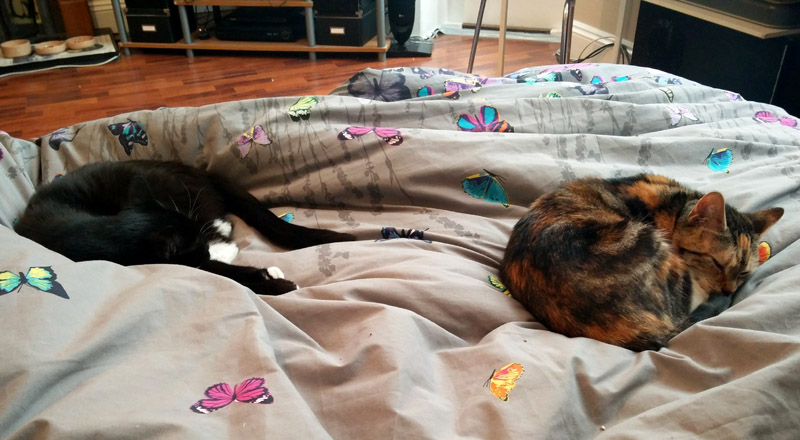
Step 2: Cats stop being friends
Despite being declared neutered when taken in for adoption, a few weeks later Maple started yowling and crawling about in a sort of commando crouch – pretty clearly a cat in heat. So we took both cats to the vet to be checked and neutered, and they returned with neat shaved squares of fur and an incision to heal:
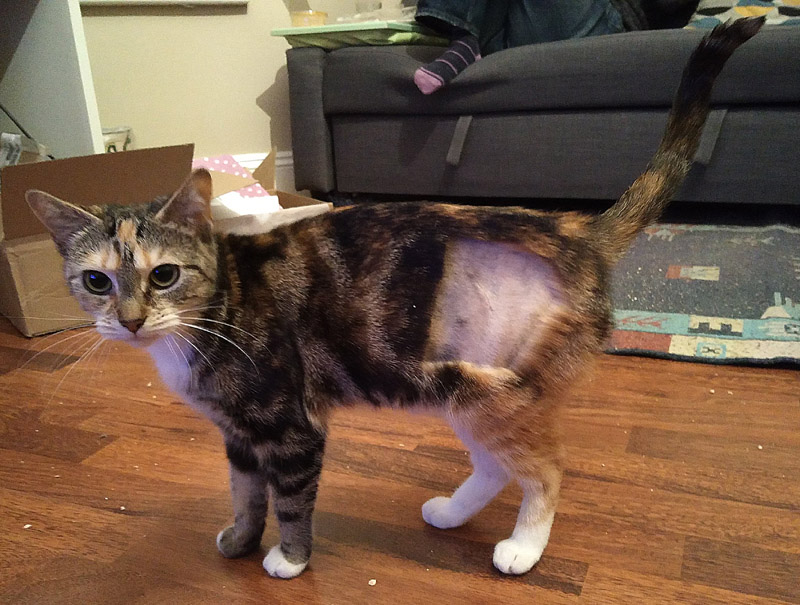
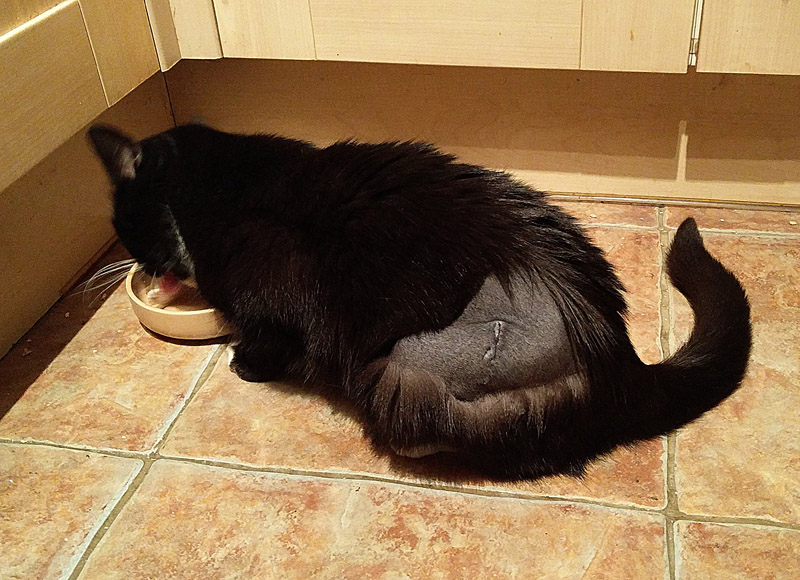
Right after this, the two cats started scrapping, which apparently is something that can happen if one (or both) spend some time at the vet and possibly pick up some new scents. With wounds that needed healing, we had to put a stop to this pretty quick.
One odd part about this: it would always be Maple chasing after Fern. However, we noticed that when other cats came into our garden, Maple would run indoors to hide, whereas Fern would run out to chase the intruder cat off. To be honest, this isn’t very important to the story of how they became reunited, but we did find it pretty fascinating:
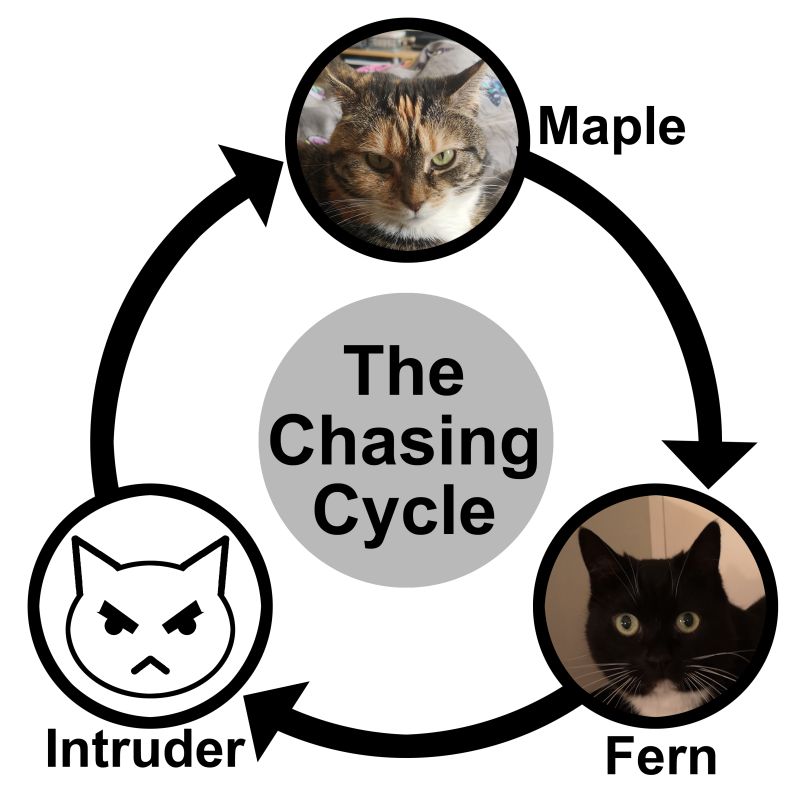
Step 3: Separate the cats
Our bedroom is at one end of the flat, and access to the small garden at the other. Dividing the flat in half gives one cat snuggling privileges and the other roaming privileges, so to balance this out and prevent territory-forming, we would swap them over every 24 hours.
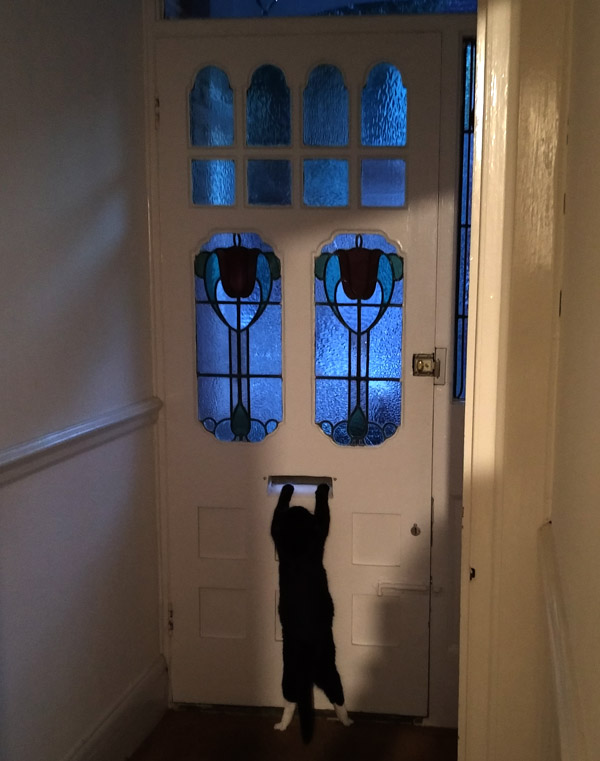
The cat antagonism was pretty intense. If Maple caught sight of Fern, she would chase her down and a huge fight would break out. So just swapping the cats meant closing one in a side room, bringing the other through and closing them in a different side room, then ushering the first cat through to their new half of the flat. This was the starting point for the reintroduction.
Step 4: Feeding nearby but out of sight
As all the experts advise, we switched to making sure cats only got fed at breakfast and dinner, and fed them either side of the door that divided the flat.
Then after a few days of that, we did the same with the door jammed open a crack.
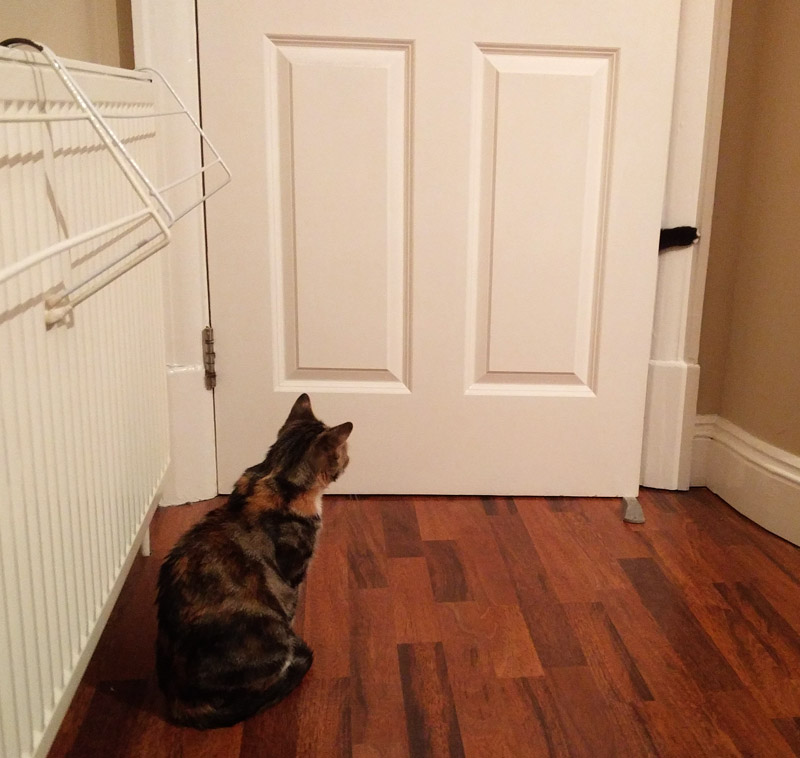
The cats would sometimes sniff at one another through the crack, and then Maple would reach a paw through to … bop Fern on the head gently? It was kind of unclear but looked semi-friendly. However, if we eased up on the multi-stage swapping routine and allowed the cats to encounter one another, chasing and fighting would resume right away, so we needed to find a gradual step somewhere between ‘door is ajar’ and ‘door is open’.
Step 5: The gate and the markers
Again as the experts advise, you create that step by installing some sort of baby-gate, and you drape a towel over it. The cats can hear and smell one another better than through a door-crack, but still can’t see each other.
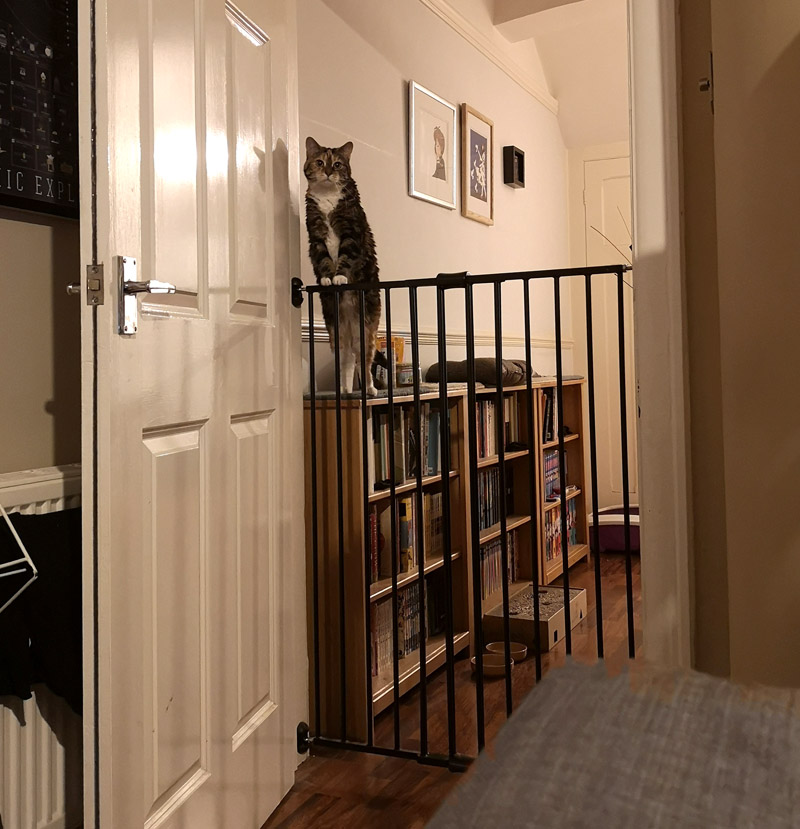
We marked out lines on the floor with masking tape and over a few weeks fed the cats ever-closer towards the gate. If we tried to get too close too quickly Fern would veto the whole thing, so we had to progress slowly.
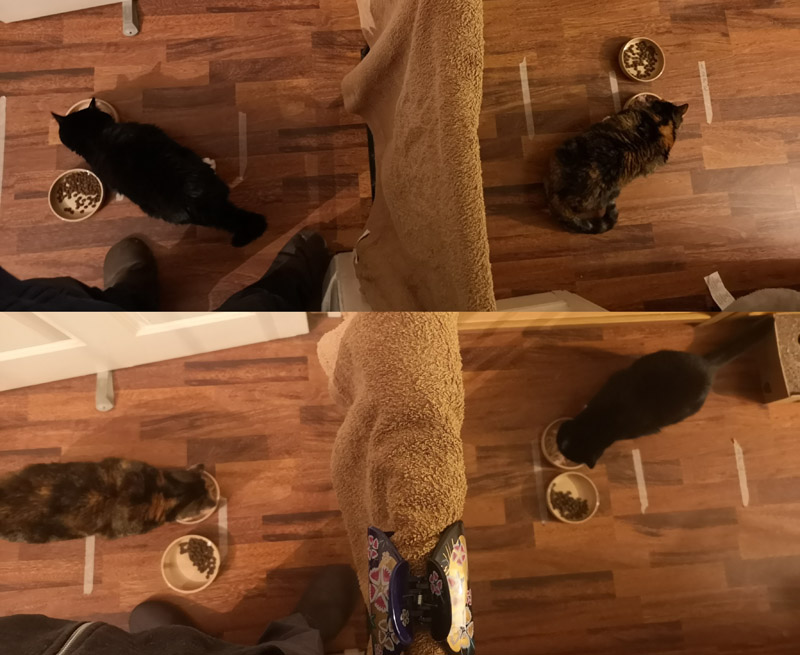
We then raised the towel a little, and repeated the process. Then raised the towel further and went through it again. Eventually the cats were happy to eat very close to one another with only the bars of the gate separating them.
Step 6: Backwards and forwards
With that step cleared… any time the cats had direct access to one another it would, eventually, still lead to a chase and a fight. We would step back to the gate feed at some distance again, or if Fern became reluctant to get that close to Maple, we would put the bowls back to a further position, and then slowly move forward again from there.
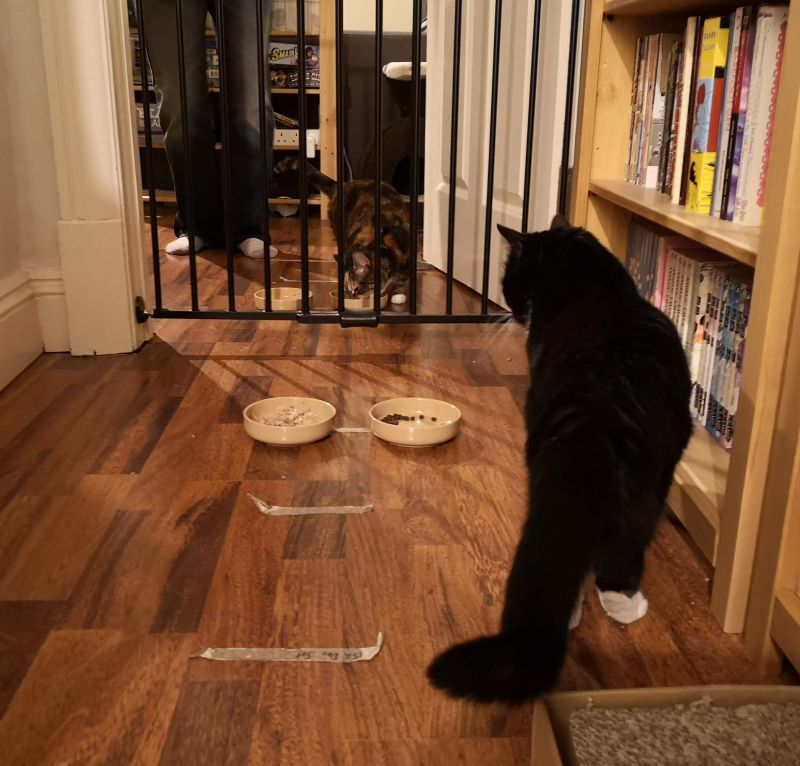
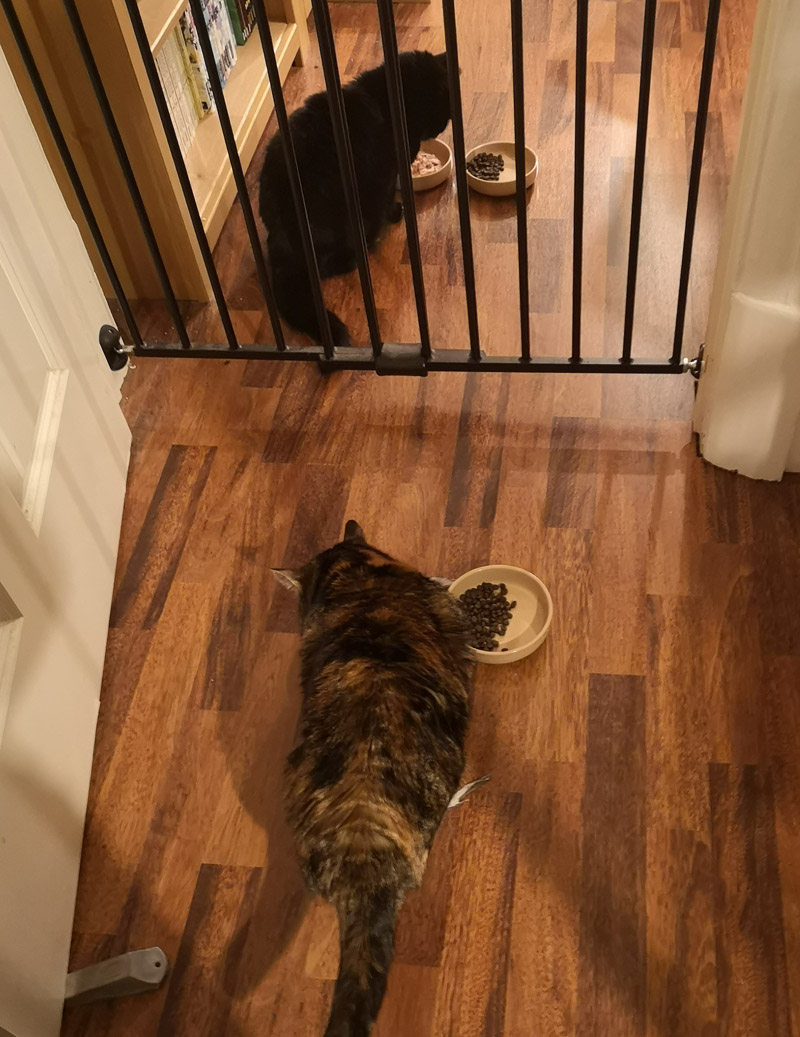
All the experts talk about this: if you have a setback, you just move back one step, and then work from there. But we stalled around this stage for a long time; even from the above stage, having direct access to each other would still quickly devolve to chasing. We needed another graduated step between gate feeding and being fully combined.
Step 7: Eating together
For at least the first 30 seconds of feeding, we noticed Fern is absolutely laser-focused on food to the exclusion of all else. We decided to use that. In the very moment the food was about to be put down, we would open the gate, and then put the food bowls close to one another.
The cats just got straight to eating with no trouble. But as soon as Fern finished, she would quite decisively saunter off away from Maple.
Step 8: Being ready for food together
The moment before eating was easiest to extend. We started to open the gate while we were preparing the cat food. If the cats got at all close to one another without incident while this was happening, we would give them each a cat treat. (Apparently cats respond to positive feedback, but not negative feedback!)
There would be the occasional hiss or raising of paws, but nothing like the chasing and fighting we had before, because they were both focused on the incoming food. As we did this for longer, the positive moments (like sniffing one another nose to nose) increased, and the hissing/bopping decreased.
Step 9: Coexisting after food
The next direction to extend was after feeding time ended. One problem: Fern would tend to leave about half of her food, whereas in the same amount of time Maple would finish hers. When Fern then left, Maple would immediately move in to try to polish off Fern’s leftovers.
There’s a fix for that: we got Fern a microchip feeder, which would only open up when it detected her microchip.
(There was a whole gradual process of getting her used to that too of course! Eating from a new bowl; a new bowl near the feeder; a new bowl in the feeder uncovered; partially covered and retracting when Fern was near, then incrementally more covered until Fern understood she could go right up to it in the closed state and it would open up for her).
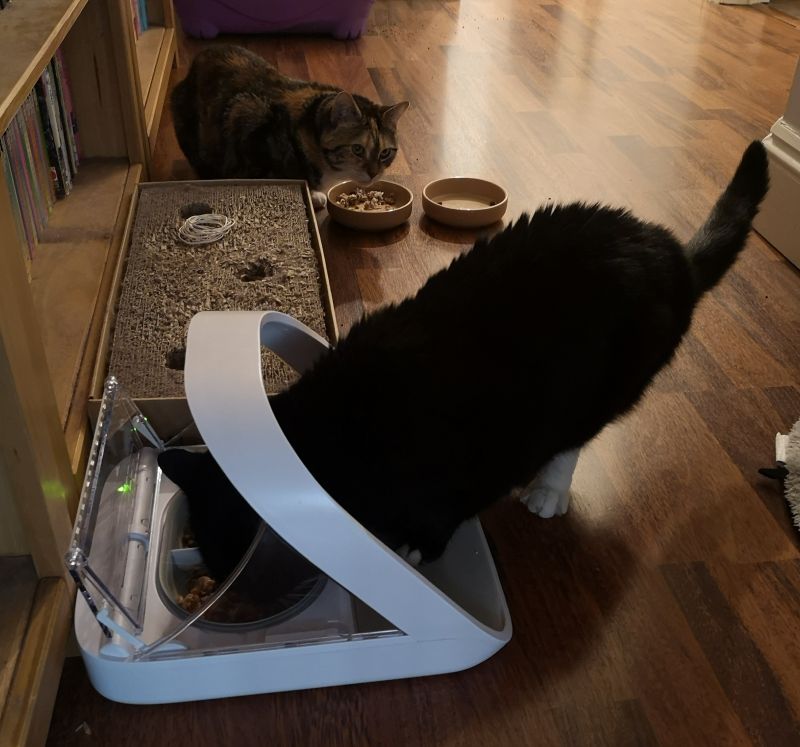
With that in place, we could allow the cats to mingle for a little while after dinner as well. Meanwhile we would continue to reward any friendly interactions – which now occasionally included licking/grooming each other’s cheek/head, although that would still sometimes fall back to a raised paw stand-off.
Step 10: Reunite… with guests!
So this step was kind of unorthodox and may be hard to replicate, but we had some family visit for a few days. This is a pretty big distraction for the cats, who have to navigate some rearranged furniture and new humans, so we took the step of reuniting them full time. This actually seemed to work – there were no cat fights, they just tried to stay out of everyone’s way, often taking refuge in our bedroom at the same time.
Step 11: Stay united
After the visitors left, we removed the baby gate and let the cats roam as they wished. While the cats generally kept a distance from one another, there were no fights. We continue to reward friendly encounters, and hissing/bopping still happens occasionally but the gaps between these small incidents get ever longer.
It’s not perfect, and they’re not as close as they seemed right at the start – but it works, and still seems to be improving. Most importantly, there are more and more moments when they seem, once again, relaxed in each others’ presence.
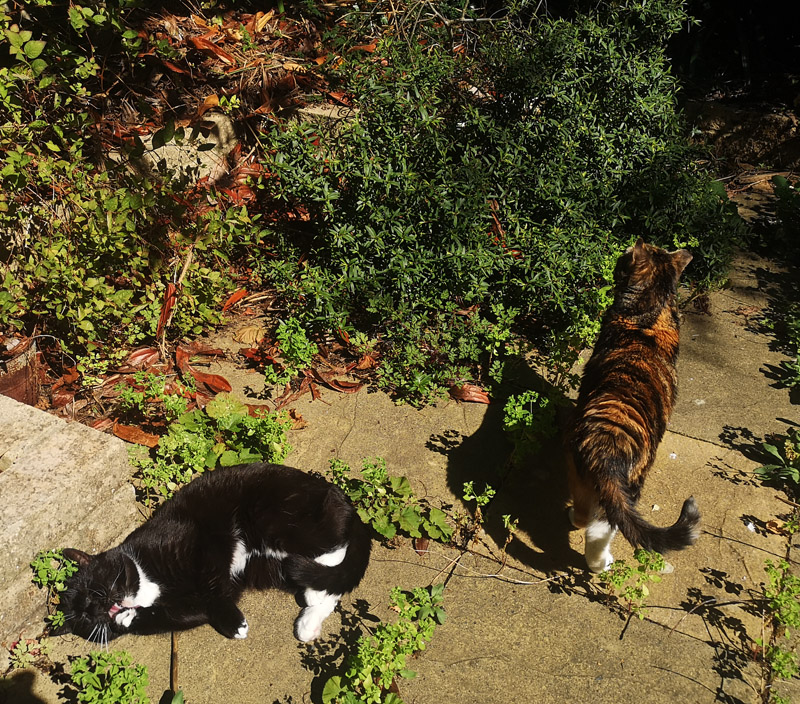
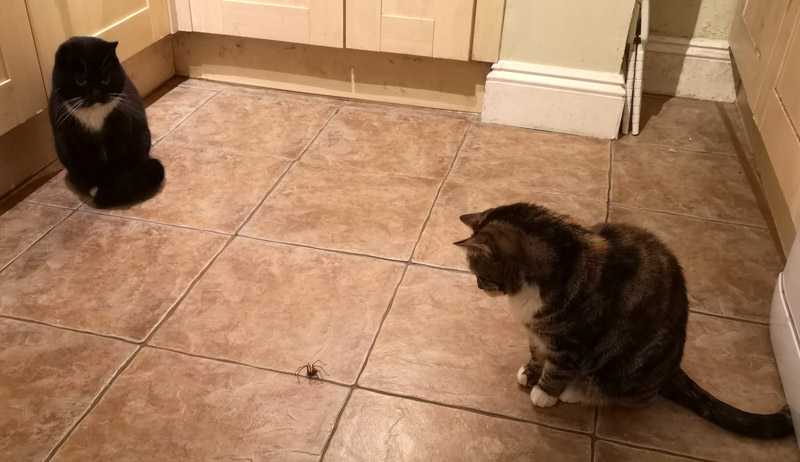
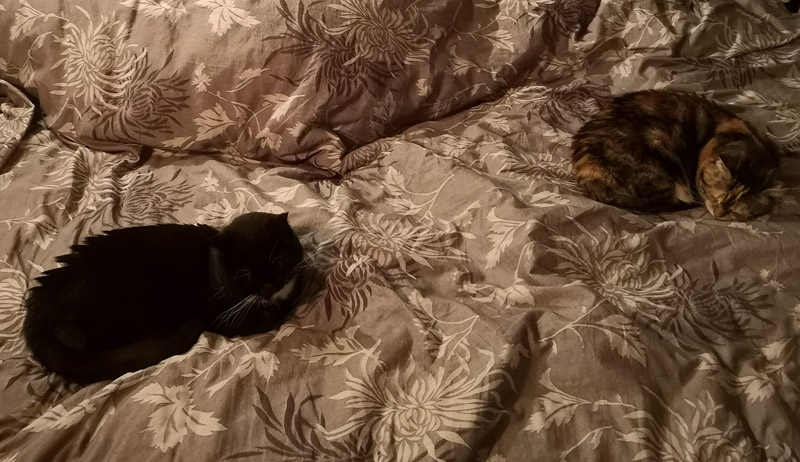
Looking back, it seems incredible that this took two years. There were many forwards-backwards steps along the way, but the hardest parts were always when we needed to work out a new gradual step. If we knew then what we know now, we could perhaps have moved through the whole process in 6 months.
For any of you out there facing a similar challenge, good luck!
- Tim Mannveille tweets as @metatim and has a lot more cat pictures if you’re interested















